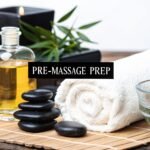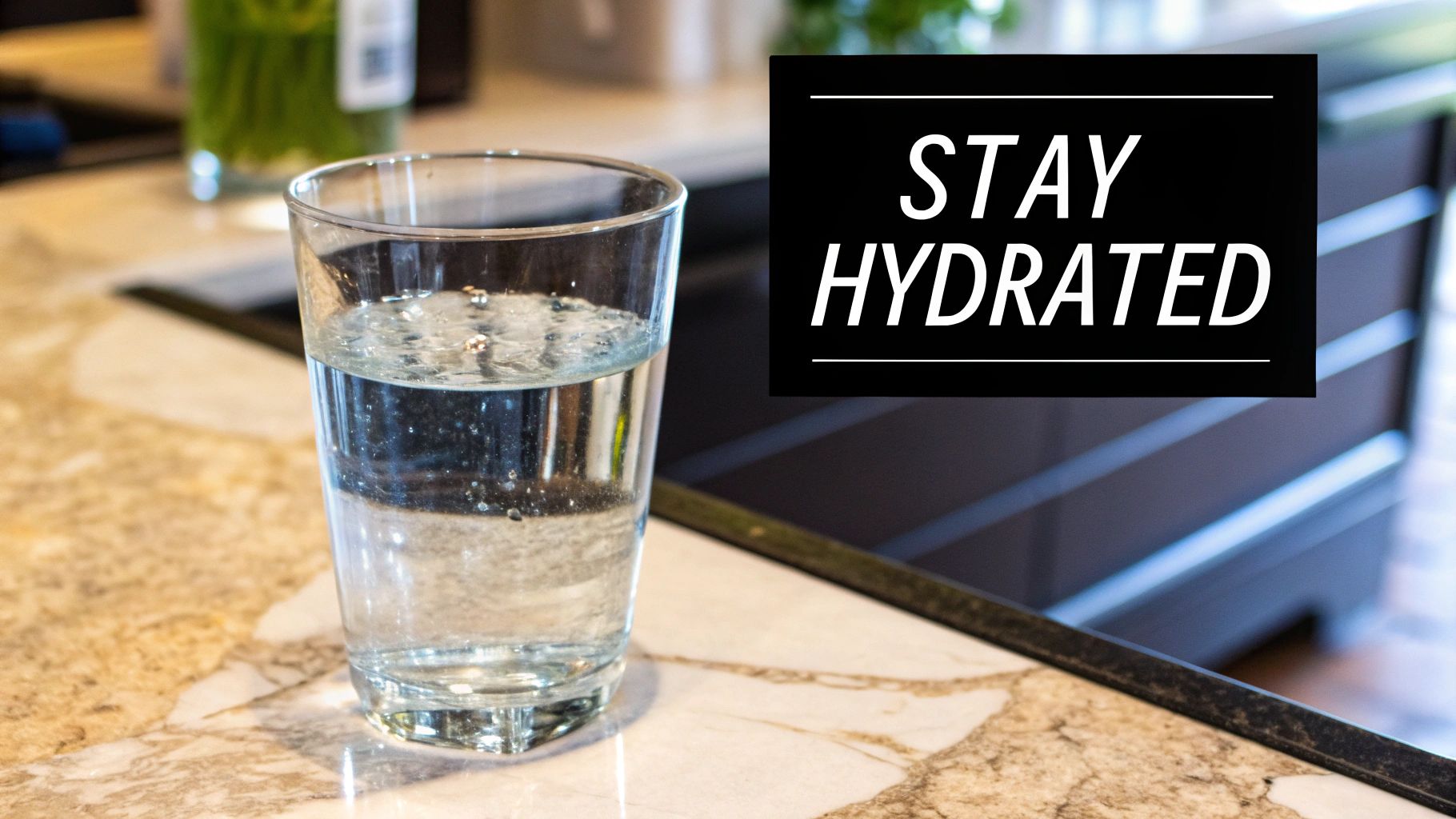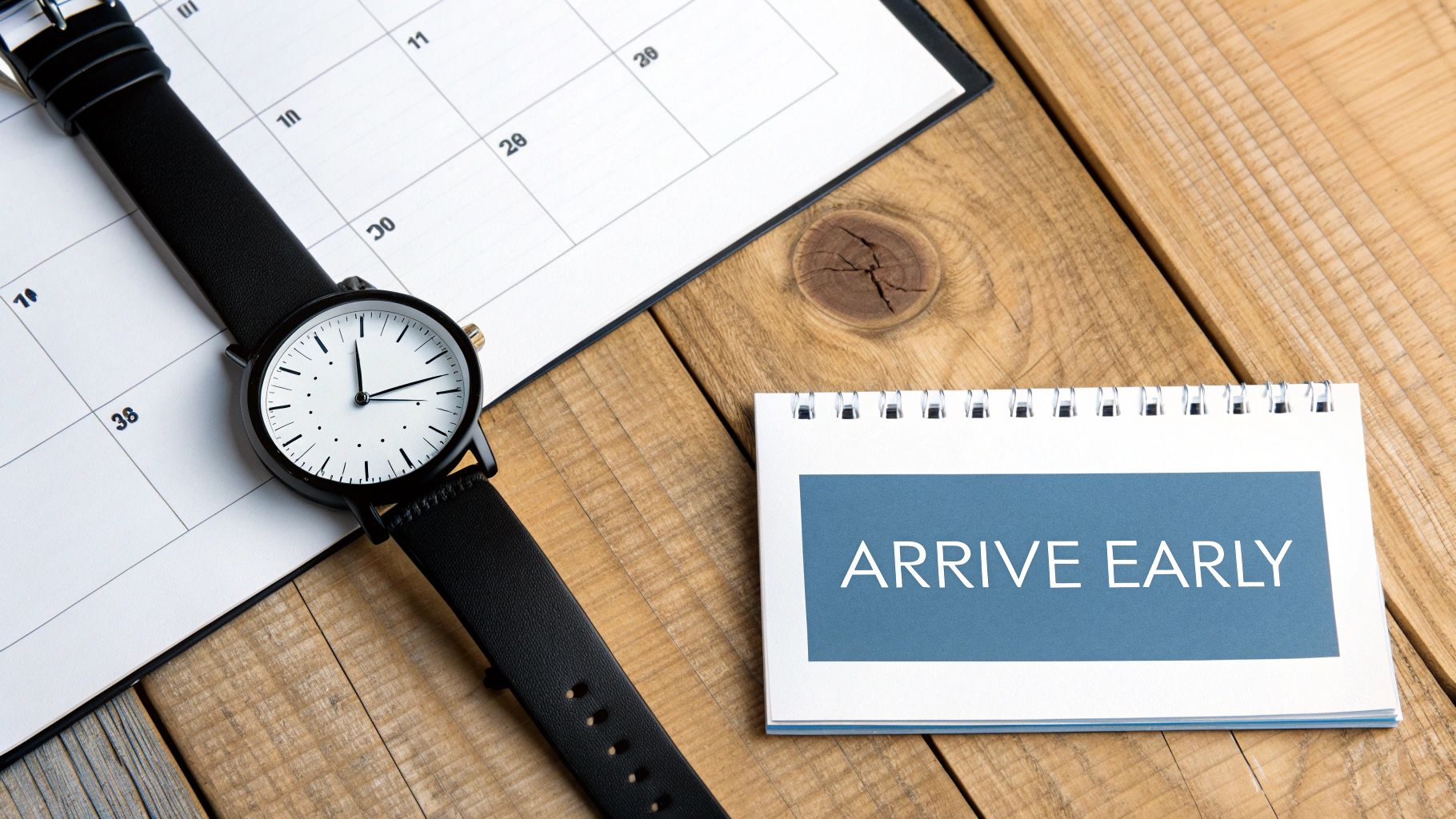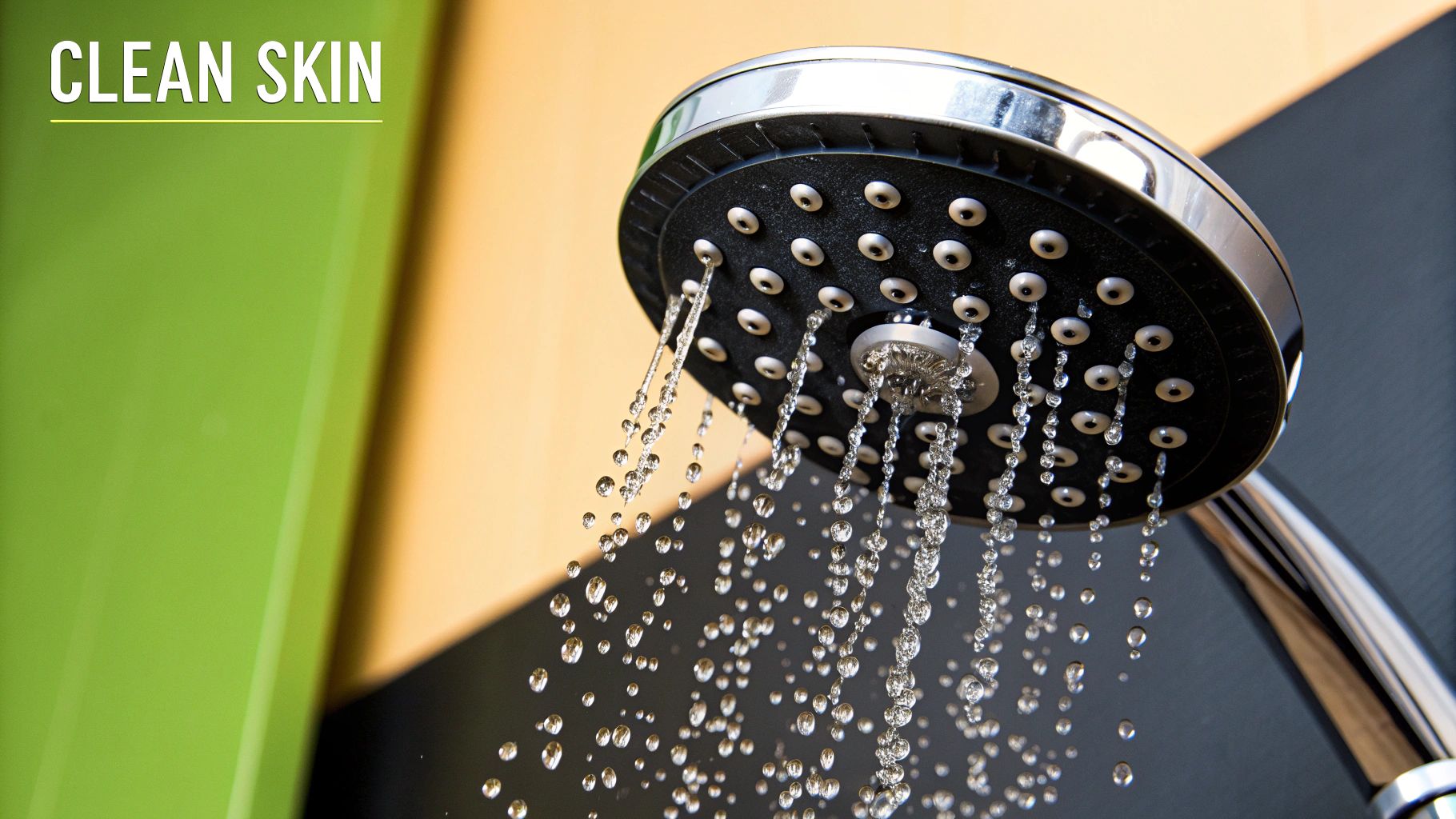What to Do Before a Massage: 6 Tips for 2025

A massage is a significant investment in your well-being, a dedicated time to unwind, heal, and rejuvenate. But did you know that the benefits of your session begin long before you step into the treatment room? Proper preparation is the key to transforming a good massage into an extraordinary one. By taking a few simple, strategic steps beforehand, you can enhance muscle pliability, deepen your relaxation, and ensure your therapist can provide the most effective treatment possible.
This guide outlines the essential actions to take, moving beyond the obvious to provide detailed, actionable insights. Whether you're a seasoned athlete managing soreness or planning your first session at a premium day spa like La Moon Massage and Facial in Houston, understanding what to do before a massage will elevate your entire experience. These practical tips ensure you receive the maximum therapeutic value for your mind and body, preparing you to fully embrace the healing process from the moment you arrive. Let's explore the pre-massage game plan that guarantees peak relaxation and recovery.
1. Hydrate Properly 24 Hours Before
Proper hydration is one of the most impactful yet simple steps you can take when considering what to do before a massage. Think of your muscles and connective tissues (fascia) as a dense network of sponges. When well-hydrated, these sponges are plump, supple, and pliable. This allows your massage therapist to work more deeply and effectively, releasing knots and adhesions with greater ease and less discomfort for you.

Conversely, dehydrated muscle tissue is tight, stiff, and brittle. Attempting to manipulate these constricted tissues can be less productive and may even feel more painful, as the muscles resist the therapist's pressure. Hydrating properly helps flush metabolic waste that can accumulate in muscles, reducing post-massage soreness and enhancing the detoxifying effects of the treatment.
Why It's Crucial for Different Massage Types
The importance of pre-massage hydration is amplified depending on the type of bodywork you are receiving.
- For Deep Tissue Massage: Athletes and individuals with chronic muscle tension often seek deep tissue work. Proper hydration is non-negotiable here. It softens the fascia, allowing the therapist to access deeper muscle layers without causing excessive pain or potential micro-tears in the tissue.
- For Sports Massage: If you’re getting a sports massage to prepare for an event or recover from intense training, hydration is key to muscle elasticity and function. Well-hydrated muscles are less prone to cramping and injury.
- For General Relaxation: Even for a Swedish or relaxation massage, being hydrated enhances the experience by making your skin more receptive to oils and lotions and improving overall circulation, which amplifies the feeling of well-being. To maximize these benefits, you can explore how to achieve proper hydration for your skin, as it's key for overall wellness and prepares your body for the massage.
Key Insight: Hydration doesn't just prepare your muscles; it also helps your body process and eliminate the toxins that are released from your tissues during the massage. This can significantly reduce next-day soreness.
Actionable Hydration Plan
To ensure you're optimally hydrated, follow a structured approach.
- The 24-Hour Rule: Begin intentionally increasing your water intake the day before your appointment. Aim for 8-10 glasses of water spread throughout the day.
- Taper Off: Avoid drinking a large amount of water within the two hours leading up to your session. This prevents the need for a mid-massage bathroom break, which can disrupt your state of relaxation.
- Check Your Urine: The clearest indicator of your hydration status is your urine color. Aim for a light, pale yellow. Dark yellow or amber is a sign you need to drink more water.
- Consider Electrolytes: If you've been exercising heavily or sweating a lot, consider adding an electrolyte powder or a low-sugar sports drink to one of your glasses of water. This replenishes essential minerals like potassium and sodium that are lost through sweat.
2. Avoid Heavy Meals 2-3 Hours Prior
Timing your meals correctly is a critical part of what to do before a massage to ensure maximum comfort and relaxation. Consuming a large meal shortly before your session forces your body to direct significant blood flow and energy toward digestion. This internal activity directly competes with the goals of massage therapy, which aims to promote relaxation, improve circulation to your muscles, and calm your nervous system.

Lying face down on a massage table with a full stomach can cause physical discomfort, bloating, and indigestion, making it difficult to relax and breathe deeply. Instead of your body focusing on healing and releasing tension, it's preoccupied with processing food. This can detract from the therapeutic benefits, leaving you feeling more sluggish than rejuvenated.
Why It's Crucial for Different Massage Types
The impact of pre-massage eating varies, but it's a key consideration across all modalities.
- For Abdominal Massage: This is the most critical scenario. Any recent meal can make direct work on the abdominal area uncomfortable or even impossible. Therapists focusing on visceral manipulation or digestive health will specifically require you to fast for several hours.
- For Deep Tissue and Sports Massage: These intense modalities require your muscles to be relaxed and receptive. A full stomach can cause systemic inflammation and pull resources away from the muscles, making them less pliable and potentially increasing discomfort during deep pressure work.
- For Relaxation or Hot Stone Massage: The goal here is to achieve a deep state of calm. Digestive processes can create internal "noise," like gurgling sounds and feelings of fullness, that keep you mentally and physically distracted, preventing you from fully immersing yourself in the experience.
Key Insight: A full stomach can elevate your heart rate and body temperature as it digests. This can interfere with the parasympathetic "rest and digest" state that massage is designed to induce, limiting the overall effectiveness of your treatment.
Actionable Meal-Timing Plan
To avoid discomfort and enhance your massage, follow this simple eating schedule.
- The 2-3 Hour Rule: Plan to eat your last substantial meal at least two to three hours before your scheduled appointment. This gives your body ample time to complete the most demanding phase of digestion.
- Opt for a Light Snack: If you feel hungry closer to your session, a light, easily digestible snack about 60 minutes prior is perfectly acceptable. Think of a small piece of fruit, a handful of almonds, or a simple granola bar.
- Avoid Problematic Foods: On the day of your massage, steer clear of foods known to cause gas and bloating. This includes beans, lentils, broccoli, cabbage, and carbonated beverages. Also, avoid heavy, greasy, or fried foods that are slow to digest.
- Listen to Your Body: Don't arrive starving, as a rumbling stomach and low blood sugar can also be distracting. The goal is to arrive feeling neutral and comfortable, not overly full or famished.
3. Communicate Health Conditions and Concerns
Open and honest communication with your massage therapist is not just a courtesy; it's a critical component of a safe and effective treatment. Your therapist is a trained professional, but they aren't a mind reader. Sharing your health history, current conditions, injuries, and even anxieties allows them to tailor the session specifically to your body's needs, ensuring you get the maximum benefit while avoiding any potential harm.

Think of this conversation as building the blueprint for your massage. Information about a recent surgery, a sensitive area, or a medication you're taking helps the therapist select the right techniques and avoid contraindicated areas or methods. This dialogue transforms a generic massage into a personalized therapeutic experience, directly addressing your unique goals, whether they be pain relief, relaxation, or improved athletic performance.
Why It's Crucial for Different Scenarios
Full disclosure is vital across all types of massage, but its importance is magnified in specific situations.
- For Injury Recovery: If you have a recent sprain, strain, or are recovering from surgery, your therapist must know. They can work around the injured area to reduce compensatory tension in other muscles or use specific, gentle techniques to aid healing, but only if they are fully informed.
- For Chronic Conditions: Individuals with conditions like arthritis, fibromyalgia, or sciatica require a specialized approach. Certain techniques may soothe symptoms, while others could cause a flare-up. It's also crucial to discuss any specific discomforts you're experiencing, such as a stiff neck, with your therapist. This also applies when deciding between different therapies for conditions like a stiff neck.
- For Prenatal Massage: Pregnancy involves significant physiological changes. A therapist trained in prenatal massage will use specific positioning and avoid certain pressure points, but they need you to confirm the pregnancy and how far along you are to ensure the safety of both mother and baby.
Key Insight: Don't withhold information because you think it's minor or irrelevant. Something as simple as a new medication (like a blood thinner) or a patch of sensitive skin can dramatically change the type of pressure or lotion a therapist should use.
Actionable Communication Plan
Be proactive and thorough with your communication before and during the session.
- Complete Intake Forms Honestly: Your session begins with the intake form. Fill it out completely and accurately. This is your first and best opportunity to list medications, allergies, injuries, and health conditions.
- Verbal Check-In: Before you get on the table, the therapist will likely ask about your goals. Use this time to reiterate key points. For example: "I mentioned my right shoulder injury on the form; I'd like you to focus on the tension in my neck but avoid deep pressure directly on the shoulder joint."
- Discuss Pressure Preferences: Clearly state your preference for light, medium, or deep pressure. Remember that you can ask for adjustments at any point during the massage.
- Speak Up During the Session: If you feel any sharp pain, discomfort, or numbness, tell your therapist immediately. It's your body and your time. Effective communication is essential, especially for a sports massage for athletes where specific muscle groups are targeted.
4. Arrive 15 Minutes Early
One of the most overlooked yet crucial aspects of what to do before a massage is managing your arrival time. Arriving 10-15 minutes early is not just a courtesy; it's a strategic part of the therapeutic process. This buffer period allows you to transition from the fast-paced, high-stress world outside to the tranquil environment of the spa or clinic, ensuring you start your session in a calm, receptive state rather than a rushed, frazzled one.

Rushing to an appointment floods your body with stress hormones like cortisol and adrenaline, causing your muscles to tighten. This creates a state of physical resistance that directly counteracts the goals of the massage. By arriving early, you allow your nervous system to downshift, your heart rate to slow, and your muscles to begin relaxing even before the therapist lays a hand on you. This preparation helps maximize every minute of your paid session time.
Why It's Crucial for Different Massage Environments
The importance of an early arrival can vary slightly depending on the setting, but the core benefit remains the same: preparation.
- For High-End Spas: These establishments often build this buffer time into their protocols. Arriving early allows you to check in, receive a robe and slippers, perhaps enjoy a cup of herbal tea, and use the restroom without feeling rushed. This entire ritual is designed to begin the relaxation process.
- For Medical or Clinical Massage: In a therapeutic setting, this time is essential for a pre-session consultation. You'll likely need to fill out or update intake forms regarding your pain points, health changes, or specific goals for the session. This detailed communication is vital for an effective, targeted treatment.
- For Wellness Centers: These centers often use the pre-massage window for a brief consultation to tailor the session to your immediate needs. This is your opportunity to discuss areas of tension, injuries, or preferences for pressure, ensuring a customized and beneficial experience.
Key Insight: Your massage doesn't start when the therapist begins the hands-on work; it starts the moment you walk through the door. Arriving early transforms travel stress into preparatory tranquility, making your treatment significantly more effective.
Actionable Arrival Plan
To ensure a smooth, stress-free start to your appointment, integrate these steps into your routine.
- Plan Your Logistics: The day before, confirm the address and check for any potential traffic or parking challenges. Knowing your route and where to park eliminates last-minute anxiety.
- Set a "Leave By" Alarm: Instead of an alarm for when your appointment starts, set one for when you need to leave. Add a 15-minute cushion to this time.
- Use the Time Wisely: Once you arrive, turn your phone on silent and put it away. Take a few deep, mindful breaths. Use this quiet time to mentally disconnect from your to-do list and focus on your intention for the massage.
- Communicate Delays: If you are running late, call the facility as soon as you can. They may need to adjust the session length, but communicating shows respect for the therapist's time. This also aligns with the principles of consistent body care; for more on establishing a routine, consider learning about how often you should get a massage.
5. Shower or Cleanse Your Skin
Showering before your session is a simple act of courtesy that significantly enhances the entire massage experience for both you and your therapist. Clean skin is not just about basic hygiene; it directly impacts the effectiveness of the treatment. Freshly cleansed skin absorbs massage oils and lotions more efficiently, allowing for a smoother glide and better delivery of any therapeutic ingredients.
From a practical standpoint, arriving clean ensures that the focus remains entirely on your treatment. It removes sweat, environmental pollutants, and residual personal care products, creating a neutral canvas. This prevents any bacteria from being rubbed into your pores during the massage, reducing the risk of skin irritation or breakouts, and creates a more pleasant and professional environment for everyone.
Why It's Crucial for Different Massage Types
The simple act of cleansing takes on greater importance depending on the context of your appointment.
- For Sports Massage: If you're an athlete coming directly from a workout or training session, a quick rinse is essential. It washes away sweat and grime, preventing clogged pores and allowing the therapist to work on your muscles without interference, which is a key part of what to do before a massage for athletic recovery.
- For Hot Stone Massage: The heat from the stones opens your pores. Arriving with clean skin is crucial to ensure that only the beneficial oils are absorbed, not dirt or bacteria, which could lead to skin reactions.
- For Spa Treatments: Many day spa packages or rituals begin with a cleansing step, like a steam shower or body scrub. This is done intentionally to prep the skin, maximizing the benefits of subsequent treatments and enhancing relaxation. To ensure your skin is perfectly prepped, understanding the significance of a thorough cleanse is key. For more on this, consider learning about the importance of skin cleansing and care.
Key Insight: A warm shower does more than just clean your skin. The warmth helps to relax your muscles superficially, making it easier for the therapist to begin their work and for you to settle into a state of relaxation more quickly.
Actionable Cleansing Plan
Follow these simple steps to ensure you arrive perfectly prepped for your session.
- Timing is Key: Aim to shower within a few hours of your appointment. This ensures you are fresh without rushing or arriving with damp skin.
- Use Gentle Cleansers: Opt for a mild, non-irritating soap or body wash. Avoid harsh exfoliants or scrubs right before your session, as this can make your skin overly sensitive to pressure and friction.
- Skip Strong Scents: Refrain from applying heavy perfumes, colognes, or strongly scented lotions after your shower. Your therapist may use specific aromatherapy oils, and conflicting scents can be overwhelming in a small treatment room.
- Pat, Don't Rub: After showering, gently pat your skin dry with a towel instead of rubbing vigorously. This prevents minor skin irritation and keeps your skin calm and ready for the massage.
6. Limit Alcohol and Caffeine Consumption
Just as proper hydration is vital, limiting substances that counteract its effects is a crucial step when considering what to do before a massage. Both alcohol and caffeine are diuretics, meaning they cause your body to lose water, leading to dehydration. This dehydrating effect can make your muscles tighter and more sensitive, potentially diminishing the positive outcomes of your session and increasing discomfort.
Furthermore, these substances directly affect your nervous system and circulation. Alcohol can impair your judgment and dull your senses, preventing you from giving accurate feedback to your therapist about pressure and comfort. Caffeine, on the other hand, is a stimulant that can increase heart rate and muscle tension, making it difficult for your body and mind to fully relax and receive the therapeutic benefits of the massage.
Why It's Crucial for Different Massage Types
The impact of these substances varies, but avoiding them is universally beneficial for enhancing your treatment.
- For Deep Tissue and Sports Massage: These modalities require your muscles to be pliable and responsive. Alcohol consumption can increase inflammation and sensitivity, making deep work more painful. Caffeine can heighten muscle tension, forcing your therapist to work harder to release knots and potentially leading to post-massage soreness.
- For Medical or Therapeutic Massage: When receiving treatment for a specific injury or medical condition, it's essential that your body's natural feedback system is uninhibited. Substances can mask pain or alter your perception, which can be counterproductive or even risky during focused therapeutic work.
- For Relaxation Massage: The primary goal here is to calm the nervous system. Caffeine directly opposes this by creating a state of alertness and sometimes anxiety. While alcohol might seem relaxing, it disrupts true restorative rest, and you won't experience the full mental and physical release that a Swedish or relaxation massage offers. The right atmosphere, enhanced by calming scents, is key, and you can learn more about how massage oils aid in achieving deep relaxation to complement a substance-free preparation.
Key Insight: Arriving for your massage in a natural, unaltered state allows your therapist to accurately assess your muscle condition and apply the most effective techniques. It also enables your body to respond optimally to the treatment, maximizing both the immediate and long-term benefits.
Actionable Pre-Massage Plan
To ensure your body is in the best possible state for your appointment, follow these clear guidelines.
- The 24-Hour Alcohol Rule: Refrain from consuming alcoholic beverages for at least 24 hours prior to your massage. This gives your body ample time to process the alcohol and rehydrate.
- Time Your Caffeine: If you are a regular coffee or tea drinker, try to have your last caffeinated drink at least four to six hours before your session. Limiting it to only your morning cup on the day of your massage is a good rule of thumb.
- Choose Calming Alternatives: In the hours leading up to your massage, opt for hydrating and calming beverages like water, decaffeinated herbal tea (such as chamomile or peppermint), or coconut water.
- Honesty is the Best Policy: If you have had a drink, be sure to inform your massage therapist. They can adjust the technique and pressure accordingly to ensure your safety and comfort. Never arrive for an appointment intoxicated.
6-Step Pre-Massage Preparation Comparison
| Preparation Step | Implementation Complexity 🔄 | Resource Requirements ⚡ | Expected Outcomes 📊 | Ideal Use Cases 💡 | Key Advantages ⭐ |
|---|---|---|---|---|---|
| Hydrate Properly 24 Hours Before | Low – simple habit to maintain | Minimal – access to water | Improved tissue flexibility, reduced soreness | Deep tissue massages, sports therapy | Maximizes massage benefits, reduces discomfort |
| Avoid Heavy Meals 2-3 Hours Prior | Low – requires meal timing planning | Minimal – meal coordination | Prevents digestive discomfort, enhances relaxation | Spa and medical massage sessions | Enhances comfort, reduces nausea risk |
| Communicate Health Conditions and Concerns | Moderate – requires honesty and detail | Minimal – time for disclosure | Safe, customized treatment, injury prevention | All massage types, especially therapeutic | Maximizes safety and effectiveness, builds trust |
| Arrive 15 Minutes Early | Low – simple scheduling adjustment | Minimal – time investment | Reduced stress, full appointment utilization | All appointments | Ensures full treatment time, reduces anxiety |
| Shower or Cleanse Your Skin | Low to Moderate – requires planning | Basic hygiene products | Better oil absorption, hygiene, reduced irritation | Spa, wellness, and sports massages | Improves comfort, prevents skin reactions |
| Limit Alcohol and Caffeine Consumption | Moderate – lifestyle adjustment needed | Minimal – avoidance of substances | Better relaxation, circulation, reduced adverse reactions | Pre-treatment for all massage types | Enhances therapeutic effects, improves recovery |
Your Next Step Towards Ultimate Rejuvenation
You’ve explored the essential framework for a truly transformative massage experience. The journey to deep relaxation and effective muscle recovery doesn't start the moment you lie on the table; it begins hours, and even a full day, beforehand. Understanding what to do before a massage is the key to unlocking the full spectrum of benefits, turning a good session into a phenomenal one.
By now, you recognize that these aren't just arbitrary rules. They are strategic actions designed to prepare your body’s internal and external environments for healing. Think of it as priming a canvas before creating a masterpiece. Proper hydration ensures your muscle tissue is pliable and ready to release tension. Avoiding a heavy meal prevents your body's energy from being diverted to digestion, allowing it to focus entirely on repair and relaxation.
From Preparation to Partnership
The most crucial takeaway is that a massage is a collaborative effort. Your preparation is your contribution to this partnership.
- Communication is Key: Openly discussing your health conditions, pain points, and preferences with your therapist isn't just helpful; it's fundamental. This dialogue transforms the session from a generic service into a personalized therapeutic treatment tailored specifically to your needs, whether you're an athlete recovering from intense training or someone seeking relief from chronic soreness.
- Creating a Calm Headspace: Arriving early, cleansing your skin, and limiting stimulants like caffeine and alcohol are all acts of self-respect. They signal to your mind and body that it's time to slow down and transition away from the stress of daily life. This mental shift is just as important as the physical preparation, allowing you to be fully present and receptive to the therapist's work.
Mastering these pre-massage rituals empowers you to take an active role in your own wellness journey. You are no longer a passive recipient of a service but an informed participant co-creating a powerful healing experience. This proactive approach ensures that every dollar and every minute you invest in a massage delivers the maximum possible return in the form of pain relief, reduced stress, and enhanced physical performance. Your body, whether aching from a workout or tight from a desk job, will thank you for this thoughtful preparation. Embrace these steps, and you will undoubtedly feel a profound difference in your next session.
Ready to experience the powerful benefits of a professionally delivered massage enhanced by your own expert preparation? The skilled therapists at La Moon Massage and Facial are dedicated to understanding your unique needs and helping you achieve your wellness goals. Put your new knowledge into practice and book your next appointment with us to feel the remarkable difference that a truly collaborative massage can make.
